

EXPLORE BY TOPIC:
  Our top 10 resources
Our top 10 resources
  Childhood / Early Life
Childhood / Early Life
  Chronic Stress
Chronic Stress
  Education
Education
  Food Security
Food Security
  Genetics
Genetics
  Jobs & Work
Jobs & Work
  Housing / Neighborhoods
Housing / Neighborhoods
  Income & Wealth
Income & Wealth
  Race / Racism
Race / Racism
  Social Inclusion
Social Inclusion
  Policy & Change
Policy & Change





Buy the DVD
e-Newsletter
FAQs
Contact Us
Site Map
Home

|
 |


|
Background: Social inclusion concerns people's basic needs as well as their ability to participate fully in society. In some ways, it encompasses all of the societal and economic conditions - and inequities - that underlie our health: our neighborhood, income, job, opportunities, support network, and other resources. But it also includes a political dimension because it relates to people's involvement in decision-making processes and their access to power and institutions.
The opposite of social inclusion is social exclusion, which can result from racism, discrimination, stigmatization and hostility as well as structural disparities and neglect. When individuals are made to feel less valued or have no control over their work and living conditions, they not only experience increased stress and anxiety but they feel disempowered, contributing to riskier behaviors and abuse, job and income instability, domestic strife, and isolation. Those consequences can in turn lead to higher social costs in terms of health care, welfare, crime, and lost productivity.
Social exclusion is tied to material conditions as well. When people are denied jobs or home loans; when they don't have access to decent, affordable housing, a good education, or reliable transportation; when their income is insufficient; when they lack opportunities to engage in civic life and can't gain access to other resources vital to their prosperity - all of these increase their likelihood of disease and premature death. For especially vulnerable populations like children, the effects can have a life-long impact even after their conditions improve - what experts like Dr. Jack Shonkoff have termed the "pile up" of risk or disadvantage.
Unlike absolute indicators, social inclusion or exclusion is measured in terms of relative advantage or deprivation within a society. Context matters - after all, the difference between living well or poorly on $1,200 per month depends on the society in which you live. Obviously hunger and homelessness exist even in wealthy nations like the U.S., but relative poverty, for example, gives us a broader picture of basic necessities, including: the ability to fix or replace something that breaks; money for school trips, convenience items and special occasions; good credit; insurance and protections in case of emergency; and collateral for home, car and educational loans.
Relative poverty has a powerful effect on health: People with higher incomes not only live longer, they are healthier. Children in poor families are seven times as likely to be in poor or fair health as children in the highest-income families, and lower-income adults are more likely to smoke, be obese, have diabetes and have heart disease.
Another important component of social inclusion is social support. Today, one in four Americans say they have no one to talk with about important matters - a number that has tripled in the last 20 years. The problem is not individual, it's structural. We work more hours annually than almost every country in the world, even Japan, and we spend on average 50 minutes a day commuting. It's no wonder that many of us are not spending enough time with our families, have cut back on volunteering and outside activities, and feel alone. Isolation is deadly, as researcher Lisa Berkman has shown, increasing the risk of nearly every cause of death.
Strengthening family ties and personal connections is certainly important to improve health. But that's only one piece of the puzzle, because the societal factors that most influence inclusion or exclusion are beyond an individual's control. Investing in our neighborhoods and schools; providing secure jobs with career ladders, good benefits and adequate income; improving work conditions; enforcing civil rights laws; supporting families and children; and above all, creating a society that works for everyone - these are the ingredients for a more inclusive, healthier nation.

|
|
|
| |
|
Social Inclusion: 0 items found |
 Accumulating Advantage Accumulating Advantage 
ONLINE INTERACTIVITY based on UNNATURAL CAUSES How do racism and class status get under the skin? How simple is it to just "brush off" experiences with racism? Try this exercise to measure what you are able to take for granted (or not) in your life, and learn how these relate to health. |
 |
 Action on the Social Determinants of Health: Learning from previous experiences Action on the Social Determinants of Health: Learning from previous experiences 
REPORT from the Secretariat of the WHO Commission on the Social Determinants of Health, March 2005 A background paper prepared for the first meeting of the Commission, with 20 pages of history of different understandings of health over the past century, and international trends and movements in recent decades to incorporate social concerns into public health policy and interventions. The report also contains about 10 pages on the aims and objective of the Commission itself. |
 |
 Action Toolkit (pdf) Action Toolkit (pdf) 
UNNATURAL CAUSES Public policy change is critical to achieving health equity. But how can organizations use the series to educate, organize and advocate for changes that will make a difference? The UNNATURAL CAUSES toolkit provides facilitation tips, background, sample agendas, and guidelines for planning an effective screening – one that not only deepens understanding of issues but serves as a step towards further involvement.
|
 |
 Addressing Poverty in TB Control: Options for National TB Control Programmes Addressing Poverty in TB Control: Options for National TB Control Programmes 
REPORT from the World Health Organization, 2005 WHO's commitment to the promotion of equity and pro-poor policies in its disease prevention and control activities is based on the recognition of poverty as a major barrier to health and health care. In the case of tuberculosis (TB), the links between poverty and disease burden have been documented for many years. This document addresses the integration of national TB control programmes on the practical issues involved and options for action. |
 |
 Advocating for Better Policies (pdf) Advocating for Better Policies (pdf) 
A straight-forward guide to community-based policy advocacy. Includes information on identifying the best policy strategies for your community, building coalitions, communicating with public officials, and policy options beyond legislation. Also includes inspiring examples of successful community-based policy reforms.
Where can you buy aaa quality Rolex replica Watches Outlet? Our Swiss fake watches online store can be a good choice.
best quality Replica Breitling Canada with Swiss movements are worth having. |
 |
 American Dream a Nightmare for Many Blacks: study American Dream a Nightmare for Many Blacks: study 
NEWS ARTICLE, Reuters, November 13, 2007 "Black Americans are failing to climb the social ladder, while a worrying number born into the middle classes are now actually poorer than their parents, according to a study released on Tuesday. The report by Brookings Institution scholar Julia Isaacs found blacks were missing out on a cherished American dream that their children will be economically better off...." |
 |
 Anthony Iton Interview (mp3) Anthony Iton Interview (mp3) 
PODCAST, Web-exclusive content from UNNATURAL CAUSES In this audio podcast excerpted from an original interview, Anthony Iton, director of the Alameda County Department of Public Health, talks about the extraordinary health of recent Latino immigrants and what we can all learn from them, the importance of hope, the power of community organizing, and why it's in all our best interest to tackle inequities sooner rather than later.
ENHANCED PODCAST (m4a) |
 |
 Arriving Healthy Arriving Healthy 
VIDEO EXCERPT, Unnatural Causes - Episode 3
New immigrants arriving in the United States tend to be healthier than the average American, but as they remain in the country, their health declines...
replicas relojes suizos |
 |
 Asian Pacific Environmental Network Asian Pacific Environmental Network 
WEB SITE "APEN seeks to empower low-income Asian Pacific Islander (API) communities to achieve environmental and social justice. APEN believes that the environment includes everything around us: where we live, work and play. And we strive to build grassroots organizations that will improve the health, well-being and political strength of our communities." |
 |
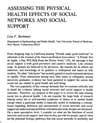 Assessing the Physical Health Effects of Social Networks and Social Support Assessing the Physical Health Effects of Social Networks and Social Support 
SCHOLARLY ARTICLE by Lisa Berkman, Review of Public Health, May 1984 In this review of data from the previous decade relating social ties to physical health, Berkman considers 1) what are the functions of social networks and social support, and what do they provide for people, and 2) what are the potential biologic pathways that link social networks to morbidity and mortality. This is a follow-up article to Berkman and Leonard Syme’s original study of Alameda County residents published in the American Journal of Epidemiology in 1979.
This article is only available online through purchase or subscription. |
 |
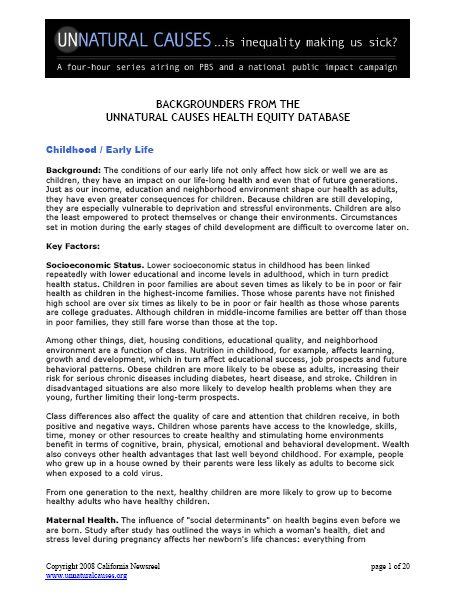 Backgrounders on Health Equity Topics (pdf) Backgrounders on Health Equity Topics (pdf) 
UNNATURAL CAUSES This document by California Newsreel provides an overview of how social concerns such as income, jobs, education, housing, and racism relate to health outcomes and inequities. The short pieces in this document are taken from the topic introductions in the Health Equity database on the UNNATURAL CAUSES Web site. |
 |
 Barriers to Health Services Perceived by Marshallese Immigrants Barriers to Health Services Perceived by Marshallese Immigrants 
SCHOLARLY ARTICLE by Deanna Perez Williams and Ann Hampton, Journal of Immigrant and Minority Health, 2005 The Marshallese immigrant population, part of a growing Asian American and Pacific Islander population in the United States, has adverse health conditions and disparities that are mainly attributed to their pre-migration health status. Little is known about the perceived and real barriers Marshallese experience in accessing and utilizing health services in the United States, but their health status is known to exacerbate. This study used an ethnographic approach to identify the rolex kopia ethnocultural and socioeconomic barriers to existing health services as perceived by immigrant Marshallese living in Northwest Arkansas. Recommendations are made to improve timely, culturally competent, and appropriate health services.
Purchase required to view full text |
 |
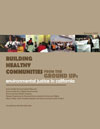 Building Healthy Communities from the Ground Up: Environmental Justice in California (pdf) Building Healthy Communities from the Ground Up: Environmental Justice in California (pdf) 
REPORT by the Asian Pacic Environmental Network et al., September 2003 A report on the landscape of statewide conditions as well as opportunities and challenges for building grassroots power and influence at the state level, using the framework of social justice. The report is designed to inform legislators and policymakers of the history of neglect and inadequate enforcement of environmental protections in California, and to identify policy, legislative, program, and investment gaps, and as a reference document to support direct organizing efforts and coalition-building. The reports contains recommendations and strategies for improving environmental justice in the state.
allreplica.net
uomega.com |
 |
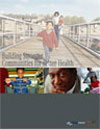 Building Stronger Communities for Better Health Building Stronger Communities for Better Health 
REPORT from Health Policy Institute & Policy Link This brief offers a framework for strengthening communities to improve the health and well-being of residents. One of four publications that outline strategies for achieving better health through community-focused solutions, this report is based on a review of the literature as well as on interviews with African American and Latino community health leaders (or those serving African American and Latino populations) and elected officials from across the country. |
 |
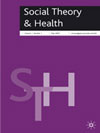 Capitalists, workers and health: Illness as a 'side-effect' of profit-making Capitalists, workers and health: Illness as a 'side-effect' of profit-making 
SCHOLARLY ARTICLE, Graham Scambler, in Social Theory and Health, 2009
This brief and polemical paper suggests that one crucial but under-investigated generator of health inequalities in Britain is the strategic decision-making of the wealthy and powerful. It is argued that the post-1970s dynamic between class and state which underpins this decision-making replique rolex has been largely ignored by medical sociology in favour of repeated studies of the poor and powerless.
(Subscription or purchase required)
|
 |
 Center for Social Inclusion Center for Social Inclusion 
WEB SITE, Project of the Tides Center The Center for Social Inclusion works to build a fair and just society by dismantling structural racism. We partner with communities of color and other allies to create strategies and build policy reform models to end racial disparity and promote equal bolsos imitacion opportunity. With our partners we conduct applied research, translate it, teach our communities, inform the public, convene stakeholders, nurture multiracial alliances and support advocacy strategies. |
 |
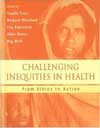 Challenging Inequities in Health: From Ethics to Action Challenging Inequities in Health: From Ethics to Action 
BOOK edited by Timothy Evans, et al., 2001 This book is designed to present cutting-edge research and policy analysis to a wide non-specialist readership of students, professionals and policy-makers. It brings together in one volume new perspectives on the conceptual foundations of health equity, empirical evidence on the scale and nature of inequities in health in twelve countries around the world, and assessments of the associated policy developments and their implications for the future.
See especially, "Social Inequality and the Burden of Poor Health,” Kubzansky, et. al. |
 |
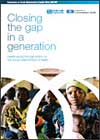 Closing the Gap in a Generation Closing the Gap in a Generation 
FINAL REPORT from Commission on the Social Determinants of Health A project of the World Health Organization (WHO), the Commission on Social Determinants of Health (CSDH) supports countries and global health partners to address the social factors leading to ill health and inequities. It draws the attention of society to the social determinants of health that are known to be among the worst causes of poor health and inequalities between and within countries. The determinants include unemployment, unsafe workplaces, urban slums, globalization and lack of access to health systems.
replica uhren deutschland The Web site also contains final reports from the different knowledge networks, as well as additional background articles and resources. |
 |
 Cultural Loss - Impact on Native American Health Cultural Loss - Impact on Native American Health 
WEB-EXCLUSIVE VIDEO, Unnatural Causes
Dr. Donald Warne talks about how cultural loss impacts the health of Native American tribes in Arizona. The damming of rivers plunged local tribes into poverty, dependence and ultimately poor health. Deprived of their language, land, livelihood and traditions, many Native Americans have developed a fatalistic view about diseases like diabetes. |
 |
 Culture of Diabetes - Native Americans and Futurelessness Culture of Diabetes - Native Americans and Futurelessness 
WEB-EXCLUSIVE VIDEO, Unnatural Causes
In some Native American communities, diabetes is so common that people grow up feeling that it is in some ways, inevitable. "I don't have diabetes yet," is what Dr. Warne often hears from his patients. Yet hope for the future is an important factor in preventing and controlling diabetes - something health care practitioners need to take into account when treating patients.
Do not miss cheap Panerai Replica Watches canada online with best quality on the reliable website!
Official Swiss movement Cheap Rolex Replica Watches UK are selling at a low price. You can find quality fake watches here. |
 |
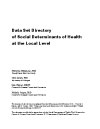 Data Set Directory of Social Determinants of Health at the Local Level (pdf) Data Set Directory of Social Determinants of Health at the Local Level (pdf) 
DATA SETS REFERENCE, Social Determinants of Health Work Group at the Centers for Disease Control and Prevention
The directory contains an extensive list of existing data sets that can be used to address the need for improved conceptualization and availability of data on how the social environment impacts the health of populations. bebek escort The data sets are organized according to 12 dimensions, or broad categories, of the social environment. Each dimension is subdivided into various components.
This directory grew out of a project based at the University of Michigan School of Public Health and funded by the Centers for Disease Control and Prevention (CDC).
|
 |
 David Williams Interview (pdf) David Williams Interview (pdf) 
EDITED INTERVIEW TRANSCRIPT, Web-exclusive content from UNNATURAL CAUSES In this original interview, David Williams, Harvard professor and executive director of the Robert Wood Johnson Foundation Commission to Build a Healthier America, discusses how race and class relate, omega replica how poor circumstances cluster geographically, and why political power is good for your health. |
 |
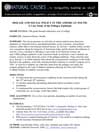 Debating Policy to Improve Population Health: A Case Study and Simulation of the Marshall Islands (pdf) Debating Policy to Improve Population Health: A Case Study and Simulation of the Marshall Islands (pdf) 
LESSON PLANS by Jamie D. Brooks and Larry Adelman for California Newsreel, 2009
How should limited public resources be deployed to tackle inequities in health? This lesson plan uses a real health crisis in the Marshall Islands and a parliamentary simulation to help students assess the strengths and weaknesses of different health promotion policies and examine the roles of government, business, medical and public health systems, individuals, and community-based groups in hublot replica governance. By the end of this activity, students will be able to argue and defend different approaches to tackling the root causes of health inequities and will better understand how the making of social policy is often influenced by political and economic factors that may have little to do with the merits of the proposals themselves.
|
 |
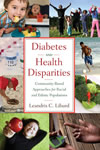 Diabetes and Health Disparities: Community-Based Approaches for Racial and Ethnic Populations Diabetes and Health Disparities: Community-Based Approaches for Racial and Ethnic Populations 
Leandris C. Liburd, PHD Type 2 diabetes and its principal risk factor, obesity, have emerged as twin epidemics in communities of color. This book investigates the epidemiology of diabetes in these minority communities, arguing that the determinants of diabetes include not only personal choices, but also broader social and contextual factors, such as community racism, residential segregation, and cultural patterns.
This book includes in-depth analyses of many community-based interventions which serve African-American, Hispanic/Latino American, Asian American, and Native American populations. The author also provides suggestions for community-based initiatives to reduce the "obesogenic" environment many minorities live in. |
 |
 Disease and Social Policy in the American South: A Case Study of the Pellagra Epidemic (pdf) Disease and Social Policy in the American South: A Case Study of the Pellagra Epidemic (pdf) 
LESSON PLAN, by Joan Brodsky Schur for California Newsreel, 2008 This lesson plan uses the series and the examination of primary source documents to guide students in understanding the social, economic, and political contexts of two epidemics in American history: pellagra and Type II diabetes. In six activities, students reflect on their own conceptions about the factors that influence health and longevity, learn about the socioeconomic conditions in the post-bellum South that led to the pellagra epidemic of the early 1900's, propose legislative solutions to the crisis, and finally use what have learned about pellagra to inform their understanding of the Type II diabetes epidemic among the Pima and Tohono O’odham Indians of southern Arizona today.
The lesson plan includes worksheets, links to primary sources, evaluation rubrics, and references to relevant standards.
In Word (doc) format |
 |
| 1 | 2 | 3 | 4 | 5 Next » |
|




